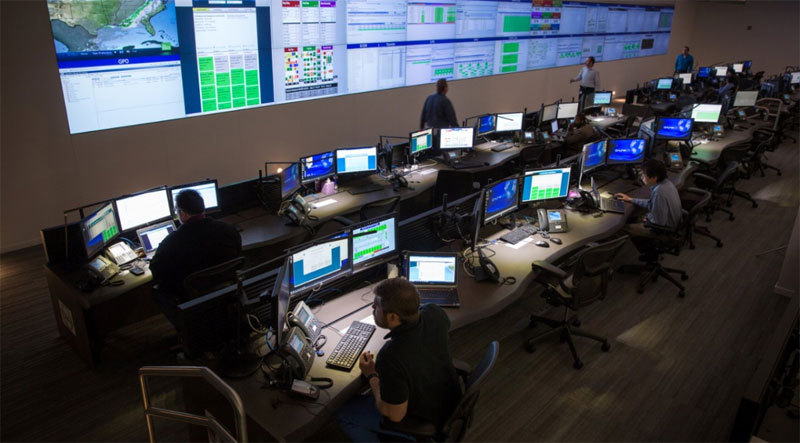From today, Intel is controlled by a computer

Intel has announced the completion of the preparatory phase of a large-scale experiment, which began more than 3 years ago. The essence of the experiment is the introduction of elements of artificial intelligence in the company's management procedures. From today, one of Intel's top managers is a computer, more precisely, a whole data center specially created for these needs. Truly, thank the robots! It is this data center, which is now filled with servers, you see on CDRV. It is assumed that the system will reach full capacity by the beginning of next year.
As already mentioned, the work on the project, codenamed Folsom, has been going on for a long time under strict secrecy. What-what, and they are able to keep secrets in Intel, and the result is more sensational.
The artificial intelligence system (it was also nicknamed cyber-boss or “cyber boss” in the process of creation) is 100% proprietary to Intel and includes several software components:
- The strategic planning system deals with the assessment of the viability of existing and emerging technologies based on the developed system of metrics and formulas. The system requires a large amount of input "raw" data, but it is, of course, not specifically required to enter them: in Intel, not only robots are engaged in the strategy.
- The system for assessing the current situation monitors the tactical characteristics of the company's work by tracking key parameters of its operating activities. All products and projects of Intel, all offices and divisions are under control. She is also engaged in evaluating the effectiveness of business processes, making, if necessary, their proposals.
- The operational control system works in tandem with the tactical module, but it solves specific, most difficult tasks that require large computational resources and guaranteed performance in certain periods. The system was developed by the specialists of Wind River Company and is, perhaps, the first real-time business application. And, perhaps, the last - so difficult was its development.
- The control and security system inspects all components of the “cyberboss” for suspicious activity caused by internal errors or actions of intruders. The module created in McAfee performs the functions of a doctor and bodyguard of the entire system at the same time, ensuring its normal functioning, which is vital for Intel.
- The system of interaction with external systems provides an interface with all kinds of information flows circulating in the company. And not only with streams, but also with people too. Thanks to RealSense technology , “cyberboss” is able to communicate with people and can attend meetings and meetings invisibly, tracking not only the topic of conversation, but also emotions, which is sometimes very important.

Control Center "cyberboss"
The hardware basis of the system is an array of servers and microservers based on the latest Intel Xeon D processor , the test design of which was made in a short time by a well-known Intel partner company. The number of nodes involved is gradually increasing, at present the total computing power of the cluster is about 2 Petaflops. According to calculations by experts, in the future it will increase by no less than 25%.
')
In a statement on the occasion of an appeal to the employees of the Intel CEO, Brian Krzanich said: “It would be strange if some other company, and not Intel, were the first to launch a similar project. We have too many prerequisites to do this. The human and technological resources, the variety of software and hardware products, the innovativeness of the business, the focus on the future - everything suggests that a “cyber boss” is serious and for a long time. ”
Intel does not expect to completely replace human machine control - it would be too risky. The goal of the company is to improve the quality of decisions made due to more accurate forecasting and analysis of various work situations. The first visible results are expected this year.
UPD. Regardless of whether you are a human or a robot, when reading this article, pay attention to the date of its creation - the first day of the second month of spring.
Source: https://habr.com/ru/post/254237/
All Articles